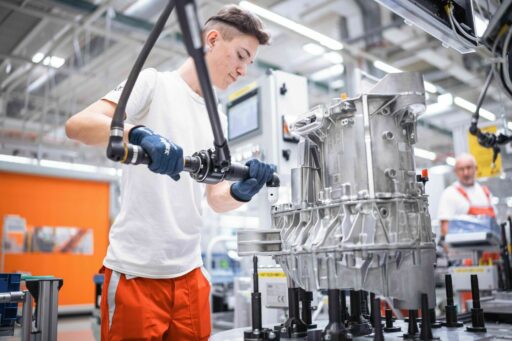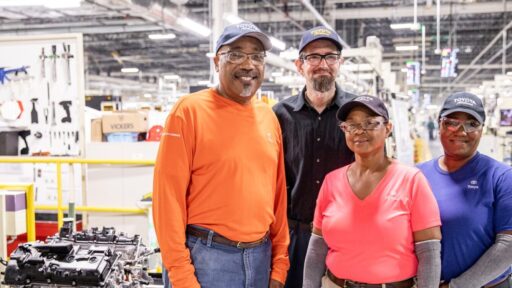Audi is leveraging the shift to e-mobility to transform its global production network, with a clear vision encapsulated in the 360factory concept. This approach emphasizes modernization, digitalization, and sustainability across Audi’s existing plants.
Since 2020, the Győr plant in Hungary has achieved net carbon neutrality, featuring Europe’s largest photovoltaic roof system and significant use of industrial geothermal energy.
The plant supplies electric motors for the PPE platform to Ingolstadt, transported via DB Cargo in a net carbon-neutral manner.
READ MORE: MG Cyberster Debuts as High-Performance Electric Convertible
The Ingolstadt plant achieved net carbon neutrality on January 1, 2024, becoming the third Audi plant to do so, following Brussels in 2018 and Győr in 2020. Audi’s Missionprogram aims for net carbon neutrality at all sites globally by 2025.
Audi’s commitment to sustainability is evident in its use of recycled materials for components in the Audi Q6 e-tron. Recycled materials reduce resource consumption and create a closed-loop material cycle.
For instance, the interior fabric Softwrap in the S line variant uses Elastic Melange, a 100% recycled polyester. Additionally, recycled materials are used for sound generators, storage compartments, and several other components.
Audi’s steel production for the outer roof section incorporates up to 15% steel scrap from end-of-life vehicles, highlighting the company’s move towards a circular economy. This process reduces downcycling and maintains material quality.
Audi sets CO2 targets for hotspot materials and components from suppliers, focusing on reducing emissions in the supply chain. For example, suppliers of battery cells for PPE-based vehicle projects commit to using green electricity, and CO2-reduced aluminum is used for selected components.
The Q6 e-tron series, Audi’s first fully electric high-volume model produced at its Ingolstadt headquarters, integrates body construction and assembly within existing structures. The new battery assembly facility at Ingolstadt, spanning 30,000 square meters, can produce up to 1,000 high-voltage batteries daily with a high degree of automation.
The Győr plant, the world’s largest powertrain plant, supplies electric motors for the PPE platform to Ingolstadt. Audi has been producing net carbon neutrally at Győr since 2020. The production of the Q6 e-tron series at Ingolstadt represents a significant milestone in Audi’s journey towards sustainable production.
To produce the Q6 e-tron series efficiently, Audi has integrated production areas like the body shop into existing structures. The body shop at Ingolstadt spans around 148,000 square meters and employs 328 workers and 1,150 robots, achieving 87% automation. Audi has also repurposed 680 robots from other models for the Q6 e-tron production and introduced over 40 automated guided vehicles (AGVs) for material provision.
The Q6 e-tron models are seamlessly integrated into the existing assembly line for the Audi A4 and A5, allowing for the production of combustion-engine and electric vehicles on the same line. This integration was achieved through eight conversion steps.
The paint shop at Ingolstadt has been extended to accommodate the new electric series, including enhancements like a new integrated procedure for automatically sealing holes and upgraded drying processes to meet higher energy requirements.
Automated technology in the paint shop helps detect, evaluate, and process surface irregularities, increasing process reliability and transparency.
At the Münchsmünster press shop, Audi has upgraded the hot forming process for PPE, used to produce safety-relevant components. The process involves heating sheet metal to 950 degrees Celsius, forming it into components, and cutting it with lasers.
The upgraded system can produce 44 different components, supporting both PPE and PPC platforms, with fully automatic setup changes allowing for the production of around 20,000 parts per day.
Audi defines net-zero CO2 emissions as offsetting unavoidable emissions through voluntary projects after exhausting other reduction measures, excluding emissions during the vehicle’s utilization stage.
READ MORE: Why Electric Vehicles Are Ideal for Off-Road Adventures
Subscribe today for the freshest car news delivered to your inbox



